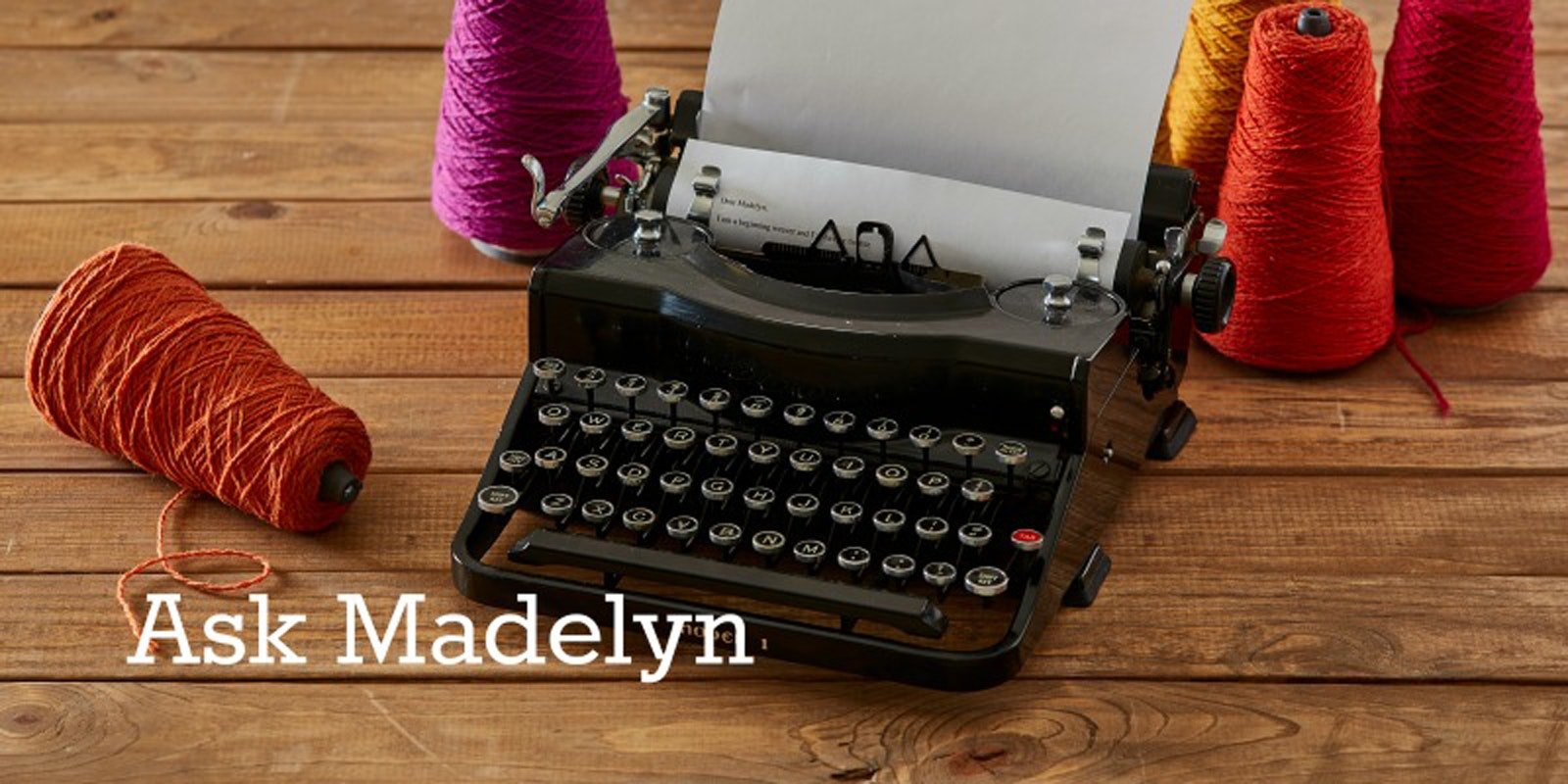Hi Madelyn! I recently saw someone using nylon fishing line in the warp as a selvedge thread on each side. How does this benefit the selvedge? How you weight them?
—Rhonda
Hi Rhonda!
I have never tried using monofilament fishing line as a floating selvedge (or threaded along with the usual selvedge thread). In theory, the fishing line acts as a very firm thread that would be less likely to allow the edge to draw in. It has frequently been used for weaving double-wide fabrics, for which the goal is absolutely no change in density at the fold edge so that when the fabric is unfolded, no difference shows there. The smooth nature of the monofilament allows it to be easily pulled out when the cloth is removed from the loom (and before wet finishing).
Because of its inelasticity, the fishing line needs more weight than a normal floating selvedge. Usually, it is tied to the front apron rod, suspended over the back beam, and weighted with whatever amount of weight makes it firm enough to keep it taut so that it holds its position during weaving.
Although I think there are situations in which using fishing line might be a benefit, other steps to achieve smooth, even selvedges are more appealing to me. I love the process of weaving itself, handling the yarns and watching them interact. Somehow, the presence of a hard nylon thread on each side of the warp isn’t something I’d like.
It seems better to me to achieve good selvedges with good weaving techniques.For smooth selvedges, throw the shuttle so that the unwinding bobbin pulls just enough to turn the weft smoothly against the edge threads. To avoid draw in, allow enough extra weft length in the shed (by the weft angle or by bubbling the weft) to accommodate the take-up necessary for the weft to pass over and under the warp threads as beater hits the fell. For warps wider than about twelve inches, using a temple helps to avoid draw in. Even though the temple (with its sharp teeth) is probably even less appealing than nylon fishline, it does a magnificent job of preventing draw-in provided there is enough weft length in the shed; without that, neither the temple nor the nylon will do the job.
—Madelyn

